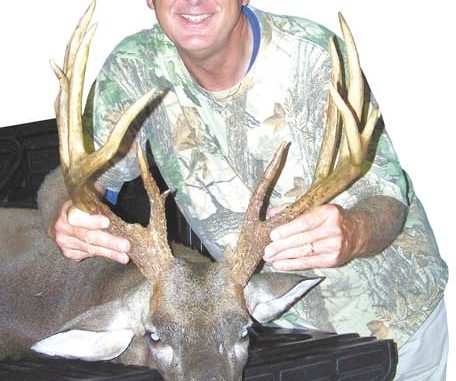
Lowcountry hunters who make the right choices will find early season deer success.
A common problem Lowcountry deer hunters have to deal with is too many options. Whitetails simply have plenty of areas where they may potentially be found.In much of the Lowcountry, soybeans, corn, peanuts and other agriculture crops attract scads of deer. Plus, there are a lot of “natural” food sources in and around river bottoms and swamps, as well as water holes that act as major deer drawing cards.
According to one highly successful hunter, adaptability and selecting the best areas to hunt are good ways to resolve the problem.
“Being able to adapt to the changing patterns of deer, given their many options, is one of the keys to successful Lowcountry hunting,” said Dennis McElveen.
McElveen lives in Murrells Inlet but spends much of his deer season in the Santee River vicinity, looking for big bucks. His favored areas include the big, deer-infested river bottom, along with the associated swamps. He also hunts adjacent agriculture fields that provide an awesome food source. With a high deer population around the river, combined with the abundant food, there’s no lack of deer hunting opportunities.
“That’s why hunting such diverse territory requires us to develop specific tactics,” he said. “It provides a great opportunity to take big bucks, but you’ve got to have a plan. Stay on top of deer movements, hunt the fresh, hot sign and change tactics as deer patterns change.
“One thing I’ve learned through the years is that hunting early in the season can be a big advantage,” he said. “September can be hot and humid, but it is a highly-productive month for a couple of reasons. One, the long-term hunting pressure is not yet an issue. Although the season opens Aug. 15th in many Lowcountry areas, the hunting pressure really begins to intensify as the season approaches the rut phase. Certainly, a lot of big bucks are taken during the rut, but early season and into the pre-rut are times when you can find some big deer on the move.
“My best buck for the entire season last year came in mid-September. It was the result of being in the right area, being observant and being ready for the opportunity, essentially adaptability,” McElveen said. “I was primarily hunting a food source when I heard the unmistakable clanging of antlers behind me, perhaps 50 yards away in a thicket. At times I would hear only a scuffling of leaves and bushes shaking, but sometimes, clanging antlers.
“The deer were not interested in the nearby food, they were establishing dominance, which also marks the beginning of the change from a summer pattern into a pre-rut pattern,” he said. “They fought for nearly 30 minutes, and as they got closer, I stood up in the stand, turned completely around and watched as they neared an old roadbed. One big-racked buck came out of the thicket and quickly went down the road. Although he was a shooter buck, it was not a good shot, so I waited, thinking the other deer may step out. It did, and (it) stood in the road looking for the other deer. I think he was the winner of the fight. He was a big-racked, 13-point buck that weighed 195 pounds.”
McElveen said he had only a few seconds to make the shot, and knowing what he had been hearing and being ready to take advantage of the opportunity were keys.
Sometimes, food sources are the key for September hunting, and veteran hunter Mike Cox of Awendaw will use them in a variety of ways to hunt deer.
Cox hunts a number of Lowcountry areas and knows that while almost any grain field will attract deer, there are specific places to best focus his hunting effort.
“Deer, especially big bucks, like the out-of-the way places,” Cox said. “For example, the back corner of a bean or corn field that lies adjacent to a swamp is a prime place for a big buck. Also, a narrow neck in a field is good.
“When I’m looking for high-use deer areas, I’ll also look for irregular features in the field,” Cox said. “A long, straight length of field broken by a cove or indentation back into the woods is a great place for a deer to enter the field.”
Another good tactic, especially for the recent dry years, is hunting near water holes.
McElveen said that dry, scorching heat in August and September make any place that holds water a high deer-traffic area.
“It’s not been unusual in a hot, dry period to see heavily-used trails leading to isolated water sites,” he said. “Conversely, in wet years, it’s not so important because water is available in so many places down here. But the combination of hot and dry weather can make these places essential for deer. I can remember years ago that hunters have even hauled water in barrels and taken it to water holes to ensure there was water for deer. When it’s dry in early season, find water, and you’ll find deer.”
Another favored tactic McElveen employs is hunting near big cane thickets along the river bottom and edge of adjacent swamps.
“The big cane thickets are ideal habitat for deer to stay in, as well as use for travel routes,” he said. “They work the edges of these thickets from bedding to food sources because there’s almost instant safety if they get alarmed.”
While Cox and McElveen both support harvesting plenty of does, they agree under the right situation, does can help you take that big buck, especially during September.
“Since you can’t shoot doe deer until after mid-September, use them as an attractant for the bucks,” Cox said. “I love to get a place where there’s 10 to 20 does eating in a bean or corn field. I think that makes the bucks simply feel more at ease. Don’t overlook the possibility that those bucks might already be in the bean fields, lying down, waiting on low light to begin feeding. A buck can literally bed down and lay in the field and not be seen, even if you’re 20 feet up in a stand. I’ve seen bucks simply stand up late in the evening, just before it was too dark to shoot.
“Don’t leave the stand early when hunting a big field late in the evening. The last five minutes of shooting light may be the more productive than the entire afternoon if you’re looking for a big buck during September.”

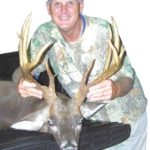
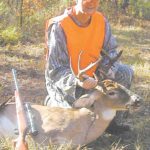

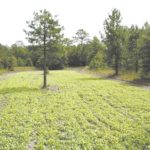
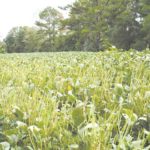



Be the first to comment